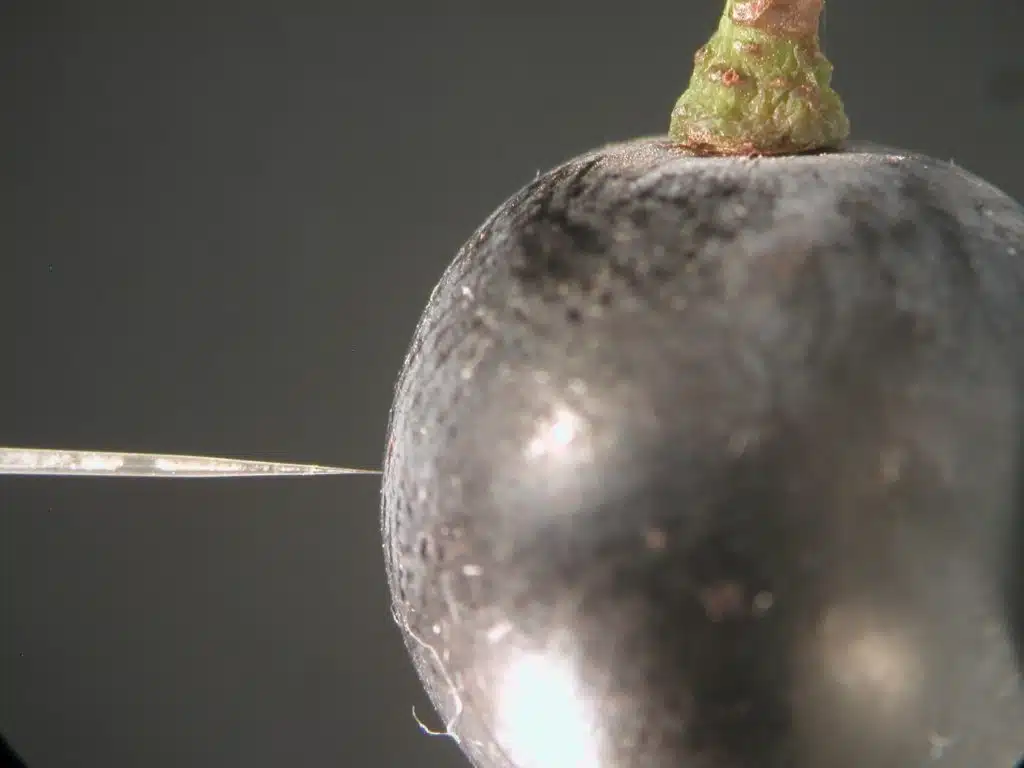A shortage of oxygen, increased by water stress, could lead to grape cells dying, according to researchers from the ARC Training Centre for Innovative Wine Production.
“This new knowledge can help us better understand berry ripening and potentially help to select hardier plant varieties, adapting grape cultivation to a warmer and drier climate,” says study leader Dr Zeyu Xiao of the National Wine and Grape Industry Centre, Charles Sturt University, who is also part of the ARC Training Centre.
The phenomenon of cell death in grapes, and the resulting shrivelling of the fruit was discovered a decade ago, but researchers have since been trying to understand the causes.
Zeyu investigated the physiological cause for cell death and how water stress and heat could affect it as his PhD project.
His team monitored oxygen levels inside Shiraz, Chardonnay and Ruby Seedless grapes as they developed, using a micro oxygen sensor.
They found a low level of oxygen was closely correlated with cell death.
The tiny pores located on the grape stems are vital for oxygen entering the grapes. They saw that if blocked they caused more cell death within the grapes.
Shiraz grapes have very small pores, which might account for the high degree of cell death within the berry, Zeyu says.
These findings were published in the Journal of Experimental Botany.
In a continuation of the study, water stress applied in the field decreased the oxygen level in Shiraz grapes and increased cell death.
This work, published in Australian Journal of Grape and Wine Research, showed the decrease in oxygen level inside Shiraz grapes was related to a decrease in air space inside the grapes.
Zeyu worked with supervisor Professor Steve Tyerman of the University of Adelaide, in collaboration with Associate Professor Victor Sadras of the South Australian Research and Development Institute, and Dr Suzy Rogiers of the NSW Department of Primary Industries.
Banner image: Zeyu’s team used micro oxygen sensors (pictured) to test grapes. Credit: The University of Adelaide





 Fresh Science is on hold for 2022. We will be back in 2023.
Fresh Science is on hold for 2022. We will be back in 2023.